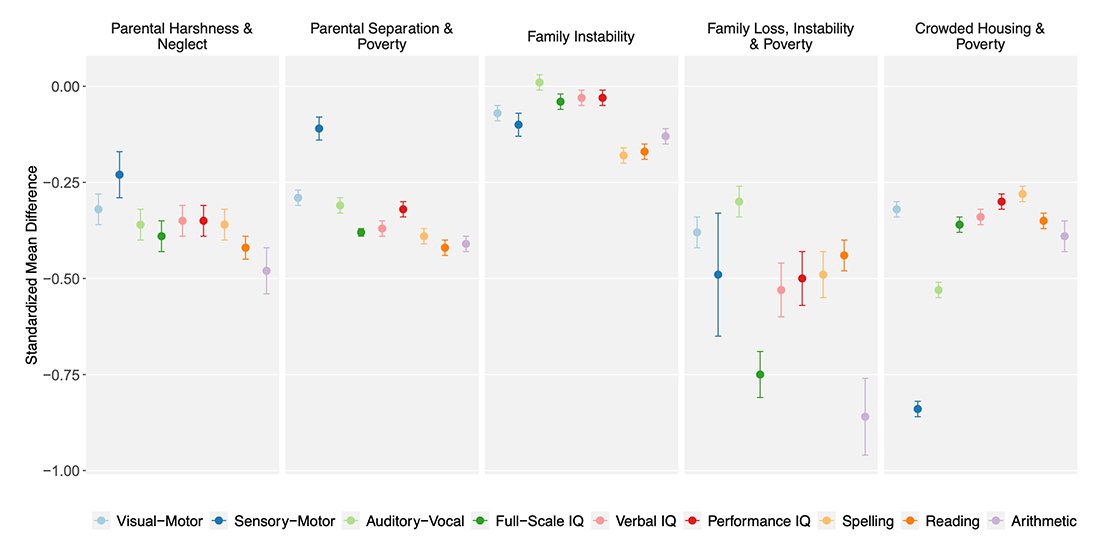Social Determinants of Child Development and Mental Health
- Stephen E. Gilman,
ScD, Senior Investigator and Chief, Social and Behavioral Sciences Branch, DiPHR - Denise L. Haynie, PhD, Senior Associate Scientist
- Jing Yu, PhD, Staff Scientist
- Zoe Chang, BA, Postbaccalaureate Intramural Research Training Award Fellow

Our work seeks a better understanding of the environments that have both positive and negative influences on development from the prenatal period onward. It also seeks to generate new insights into mechanisms that underlie the early life origins of health disparities, identify developmentally sensitive periods for the emergence of disparities, and uncover opportunities for reducing disparities at the population level.
Our research focuses on both healthy and abnormal child development, on environmental factors at many levels of analysis (individual, family, and neighborhood), on associated biomarkers of exposure and impact, and on long-term outcomes, with an emphasis on mental health and mental disorders. Inspired by the “Developmental Origins of Health and Disease” and “Life Course Epidemiology” movements, our work adopts several approaches in diverse populations to advance knowledge of the social determinants of health and, in particular, of the developmental mechanisms involved. Ongoing studies are described below.
The prenatal period and early childhood
Maternal immune activity during pregnancy has been repeatedly linked to neuropsychiatric disorders in offspring. To the extent that maternal inflammation during pregnancy causes deviations from typical neurodevelopmental trajectories in offspring, which result in elevated risk of neuropsychiatric disorders such as schizophrenia, autism, and major depressive disorder, it is unlikely that neurocognitive functioning in childhood would remain otherwise intact. However, much less is known about the role of immune markers at specific points during gestation in children’s neurocognitive development. This is important because impairments in neurocognitive function in the domains of intellectual ability, language, and higher-order cognitive processes might serve as early markers of vulnerability to a lifetime risk and recurrence of neuropsychiatric disorders. For example, Figure 1 shows deficits in neurocognitive development among children exposed to different types of childhood adversities. The ENRICHED study seeks to expand our knowledge about the prenatal and childhood mechanisms of health disparities.
Figure 1. Associations between patterns of childhood adversity and children's neurocognitive development
The plot shows standardized mean differences in neurocognitive scores between children exposed to patterns of childhood adversities compared with those exposed to Low Adversity. Comparing neurocognitive scores with those of the Low Adversity class, the Family Instability class had the smallest differences, Parental Harshness & Neglect and Parental Separation & Poverty had moderate differences, and Family Loss, Instability & Poverty and Crowded Housing & Poverty had moderate to large differences. Source: Reference 2.
Figure 1. Associations between patterns of childhood adversity and children's neurocognitive development
The plot shows standardized mean differences in neurocognitive scores between children exposed to patterns of childhood adversities compared with those exposed to Low Adversity. Comparing neurocognitive scores with those of the Low Adversity class, the Family Instability class had the smallest differences, Parental Harshness & Neglect and Parental Separation & Poverty had moderate differences, and Family Loss, Instability & Poverty and Crowded Housing & Poverty had moderate to large differences. Source: Reference 2.
Adolescence and adulthood
Trajectories established as early as infancy influence mental and physical health in later stages of the life course, extending into adolescence and young and middle adulthood. One of our team’s focus areas concerns the developmental vulnerability to suicide, a leading cause of death among young people and a major contributor to the disease burden associated with mental illness. Accordingly, we have undertaken a large-scale cohort study of the developmental origins of premature all-cause mortality and suicide mortality based on the historic United States Collaborative Perinatal Project. Related work, in collaboration with our colleagues on the Next Generation Health Study, concerns the social determinants of mental health problems and substance use during adolescence. We also continue our work toward understanding the long-term and potentially intergenerational influences of the early environment on health.
Publications
- The developmental origins of suicide mortality: a systematic review of longitudinal studies. Eur Child Adolesc Psychiatry 2024 33:2083–2110
- Patterns of adverse childhood experiences and neurocognitive development. JAMA Pediatr 2024 178:678–687
- Associations between prenatal stress with offspring inflammation, depression and anxiety. Psychoneuroendocrinology 2024 169:107162
- Socioeconomic mobility, metabolic health, and diet: mediation via subjective socioeconomic status. Obesity (Silver Spring) 2024 32:2035–2044
- Adverse childhood experiences and risk of suicide and substance-related mortality through middle adulthood. J Affect Disord 2025 369:1201–1208
- Further considerations on adverse childhood experiences and neurocognitive development-Reply. JAMA Pediatr 2024 178:1229–1230
Collaborators
- Christine Brousseau, MD, Women & Infants Hospital of Rhode Island, Providence, RI
- Gary Gensler, MS, The Emmes Corporation, Rockville, MD
- Michelle Hartley-McAndrew, MD, University at Buffalo, State University of New York, Buffalo, NY
- Lina Mu, PhD, University at Buffalo, State University of New York, Buffalo, NY
- Seth Sherman, PhD, The Emmes Corporation, Rockville, MD
- Michael Silverstein, MD, Brown University, Providence, RI
- Rebecca Stevens, MD, University at Buffalo, State University of New York, Buffalo, NY
- Jean Wactawski-Wende, PhD, University at Buffalo, State University of New York, Buffalo, NY
Contact
For more information, please email stephen.gilman@nih.gov or visit https://www.nichd.nih.gov/about/org/dir/dph/officebranch/sbsb/social-determinants.


